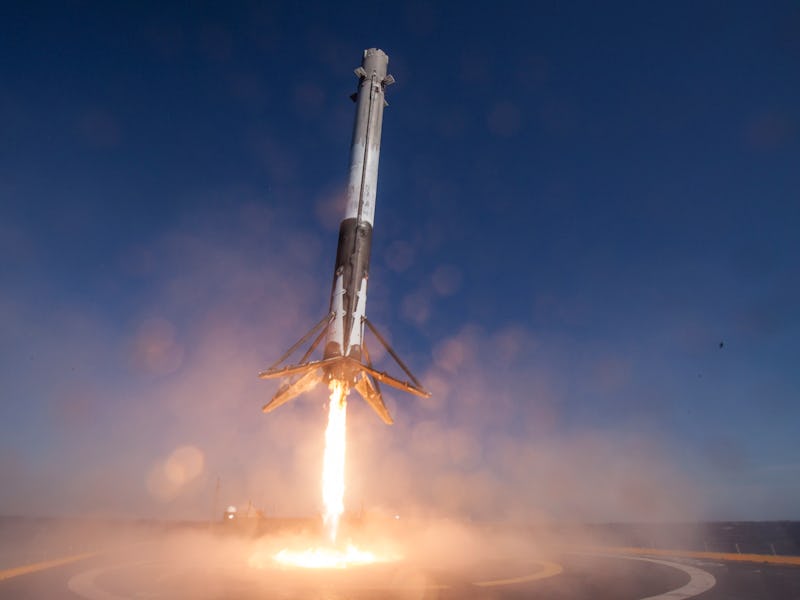SpaceX is getting into the party spirit. CEO Elon Musk revealed on Sunday that the space-faring firm plans to try and employ “a giant party balloon” to bring its rockets’ upper stages back from orbital velocity. If all goes to plan, the company would then land the component on “a bouncy house.”
It sounds like another outlandish idea from the same mind that sent his own car into space, but Musk has good reasons behind his plan. A balloon is ideal because it keeps its shape across all ranges of Mach number (known as “regimes”) and helps reduce the ballistic coefficient by two orders of magnitude. Musk explained that SpaceX already carries out targeted retro burns for the upper stages to an empty area of the Pacific Ocean. The new plan would involve retargeting closer to the shore and positioning a catcher ship in a similar manner to Mr Steven.
Mr. Steven gives us an idea of how this party idea would work. The ship uses what Musk has described as “basically a giant catcher’s mitt welded on,” consisting of four metal arms and a net. The system was first used in February 2018 to recover the rocket’s fairing, which is used to cover the payload. The fairing has onboard thrusters to guide it to the ship as it falls at eight times the speed of sound, but unfortunately Mr. Steven missed its first fairing.
SpaceX’s mission to recycle as much of its rockets as possible continues. The reward is greatly reduced operating costs: while a rocket costs $62 million to build and run, the fuel only costs around $300,000. The company saves around $46.5 billion from reusing the first stage booster. All this adds up to more money for the Mars mission, set to send a manned mission to the red planet by 2024, and proves how the “BFR” could refuel and return to Earth.
Musk didn’t give a timeframe for when his party balloon will rise into action, but SpaceX has plenty of upcoming missions to try. NASA’s Transiting Exoplanet Survey Satellite is set to launch April 16, followed by the Bangabandhu 1 communications satellite on May 4.
Musk didn’t explain where he got his idea from, but Twitter user Bassam Malik noted some similarities to the video game Fortnite.
